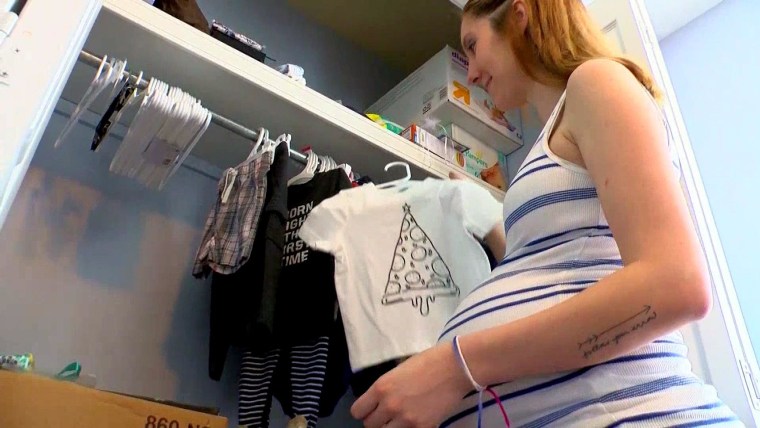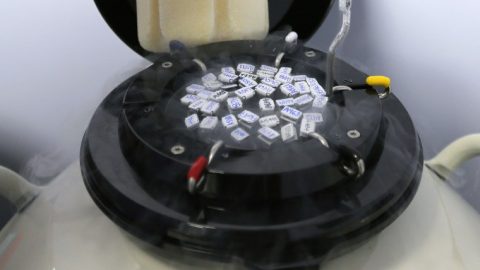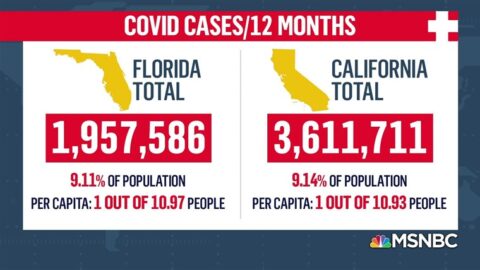As interest grows in alternative birthing choices such as water births, consumption of placentas and deferring newborn vaccinations, doctors should counsel expectant parents on the risks such decisions could pose to babies, a new report said.
The clinical report was published online Monday in Pediatrics, the peer-reviewed journal of the American Academy of Pediatrics, and examined seven emerging birth trends.
Few or no clinical studies have been done on some of the trends the report covered, such as so-called lotus births, which entail leaving the umbilical cord and placenta attached to an infant until the cord detaches naturally, as opposed to cutting it when a baby is born.
But the document referred to incidents in which these untraditional moves resulted in medical emergencies. Lotus births, it found, had no clear benefit and in rare cases resulted in sepsis, an extreme response to an infection, in newborns.
Dr. Dawn Nolt, the report’s lead author, said the goal was to educate pediatricians on how to counsel families who are considering these practices and to raise awareness among pediatricians on how to evaluate and treat a child who may have developed an infection as a result of these birth choices.
“I think this report fills a hole,” Nolt, a professor of pediatrics in the division of infectious diseases at Oregon Health and Science University, said. “We really hope families feel comfortable enough discussing these practices with their provider.”
The report also found:
- Water births, which involve making labor more comfortable by immersing a pregnant woman in water, have been shown to be beneficial during the first stage of labor. But there is no benefit for the second stage of labor or for delivery, and there is a chance of serious waterborne infections, it said. The report also cited instances of drownings or near-drownings of babies born underwater.
- It is not yet considered safe to practice a trend known as vaginal seeding, which involves swabbing infants who have been born via Cesarean section with the fluid from a mother’s vagina that babies born vaginally are exposed to. A small pilot study suggested this could be beneficial to a baby’s microbiome, the report said, but it cautioned that studies are ongoing and this practice should not be done outside of a research setting.
- Placental consumption — a practice that has gained popularity for its purported benefits to the mother, including increased energy and increased breast milk production — has not been proven to provide any boosts, the report found. One case report, however, identified a newborn sickened by bacteria from placenta capsules taken by their parent.
- The report discouraged delaying the dose of a Hepatitis B vaccination that is recommended for all healthy infants within 24 hours of birth. It also found no reason to delay the administration of eye ointment that prevents gonococcal ophthalmia, an infection with the potential to cause blindness if untreated.
- There was one birth trend the report welcomed: delayed bathing, or not performing a newborn’s first bath for at least several hours into their life, unless a baby has been exposed to HIV, genital lesions or another infection. Many hospitals have already integrated this practice.
Dr. Alison G. Cahill, chair of the American College of Obstetricians and Gynecologists’ Clinical Consensus Committee — Obstetrics, praised the report for the “terrific amount of guidance” it offers physicians who speak with expectant parents.
“While all of us providers really try to embrace opportunities to individualize the experience for pregnant people and their families in terms of what their birthing experience is like, we want to do that within the bounds of what is safe clinical practices,” said Cahill, who is also a professor of women’s health at Dell Medical School at the University of Texas at Austin.
But the president of the American College of Nurse-Midwives, Catherine Collins-Fulea, said she saw the report as “kind of one-sided” and suggested that anecdotal case reports on birthing choices should not be generalized. Many aspects of giving birth, she said, cannot be studied well through clinical trials, but that doesn’t necessarily mean birthing options cannot be safely presented to expectant parents.
“I really think it comes down to maternal choice, when we do not have solid evidence one way or another.”
CATHERINE COLLINS-FULEA, president of the American College of Nurse-Midwives
“I really think it comes down to maternal choice, when we do not have solid evidence one way or another,” she said.
Both Collins-Fulea and Cahill said they have observed an increase in inquiries from expectant parents about many of the trends listed in the report, particularly vaginal seeding as the C-section rate across the United States has risen.
“But again, there are so many infectious concerns that it is absolutely something we recommend very strongly against unless it’s within a research setting that a patient has consented to be part of,” Cahill said.
A backlash to ‘too medicalized’ births
Interest in emerging birth choices, Cahill said, stems from a combination of factors: Expectant parents are receiving information about labor and delivery from different sources, including social media and celebrities, and there’s growing skepticism about traditional medical practices.
“I think in some communities, there is a concern as to whether or not the birth experience and giving birth is, if you will, too medicalized, or too Western medicalized,” she said.
Collins-Fulea, meanwhile, pointed out that there are proven gains associated with less extreme versions of some of these trends. While leaving an umbilical cord intact for days after birth doesn’t have documented benefits, delayed cord clamping — or not clipping the umbilical cord for at least 30 to 60 seconds — is recommended to increase hemoglobin levels in babies.
Nolt suggested that parents might be gravitating toward the more radical choices described in the report because they feel the practices could improve a mother’s health and comfort, improve a baby’s health and comfort or give their baby a head start in the world.
But unproven birthing methods are not necessarily the answer, she added.
“We know there are good practices out there: prenatal vitamins, good nutrition, rest for the mom. And for the baby, just being attuned to a baby’s needs,” Nolt said.
Cahill encouraged all expectant parents to ask their health providers questions.
“Too much is at stake in medicine to head down a path where we have no evidence,” she said.
CORRECTION (Jan. 27, 2022, 12:25 p.m. ET): A previous version of this article misstated Dr. Alison G. Cahill’s stance on vaginal seeding. She does not believe it will ever be accepted as beneficial within the medical community. The reference has been removed from the article.









Recent Comments